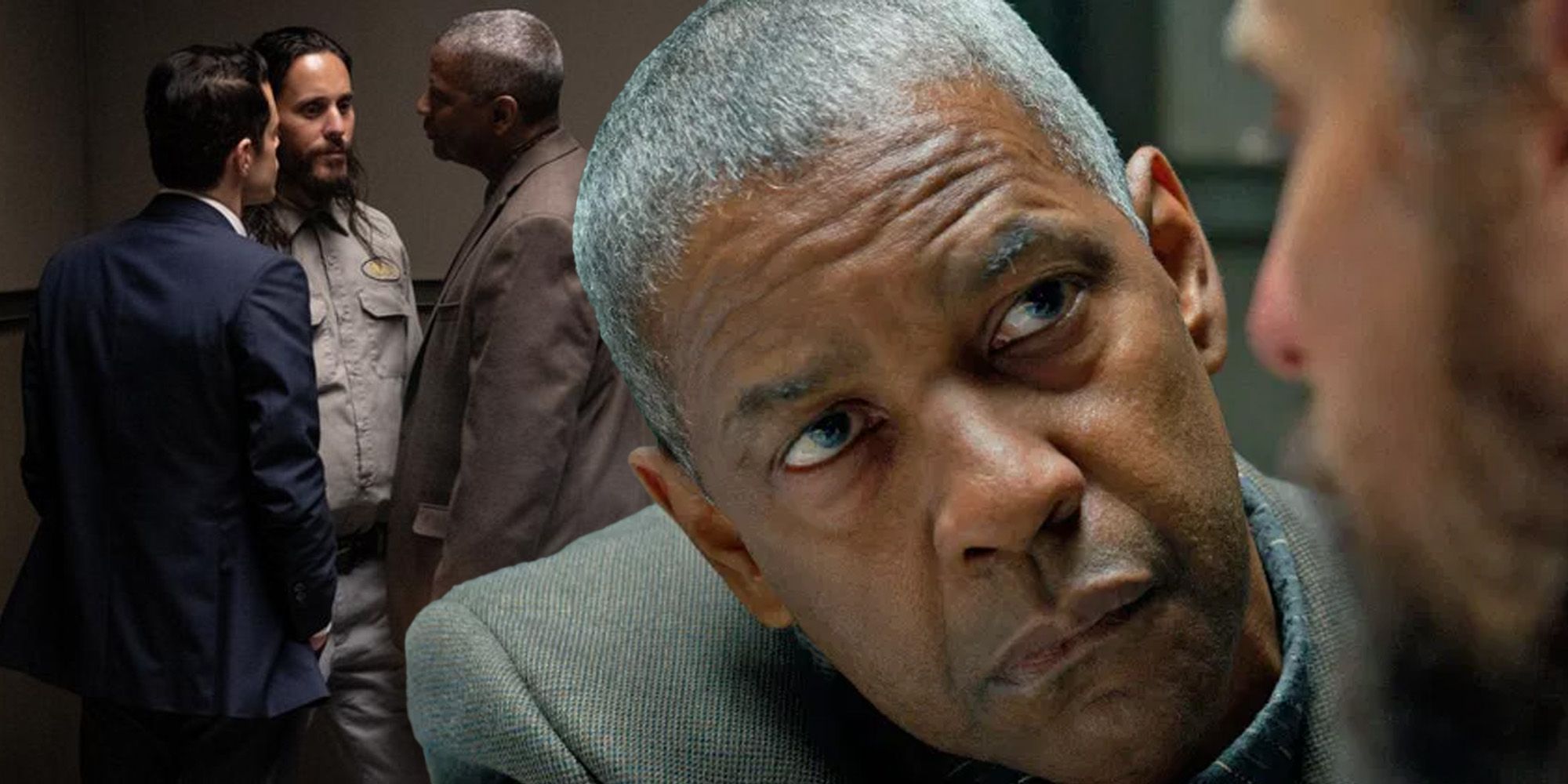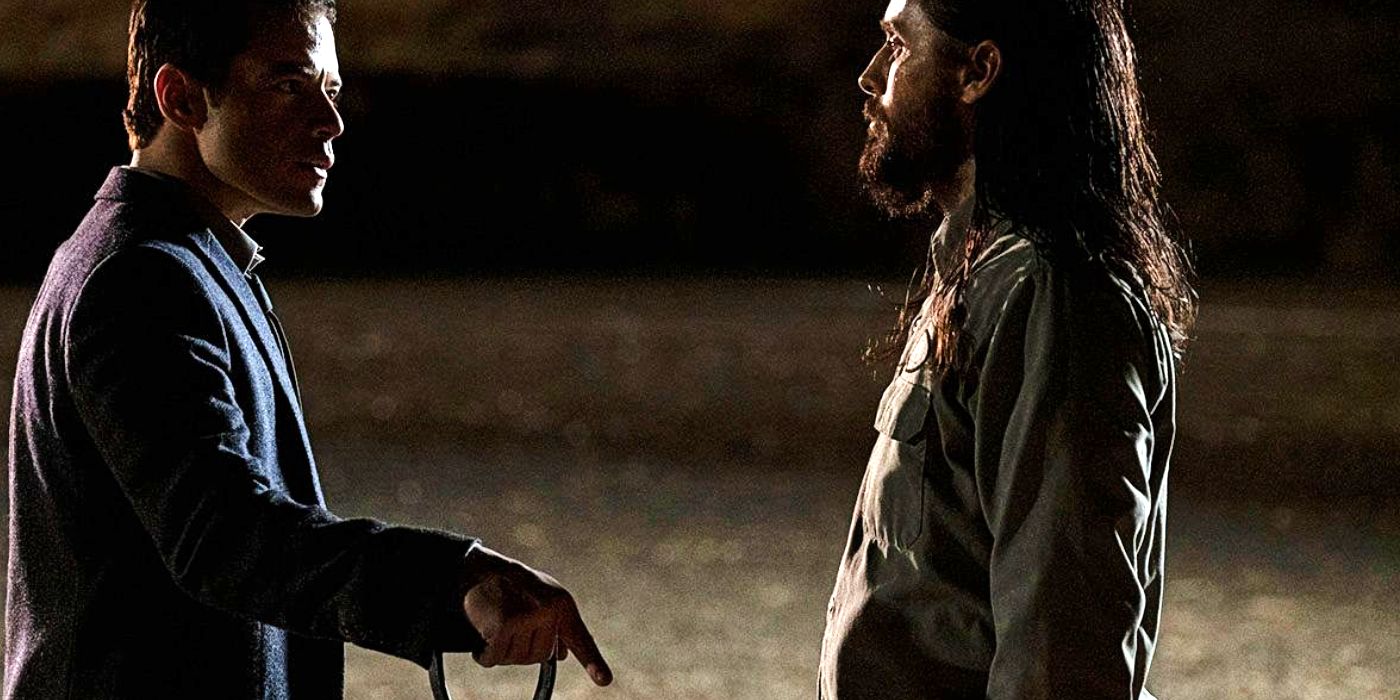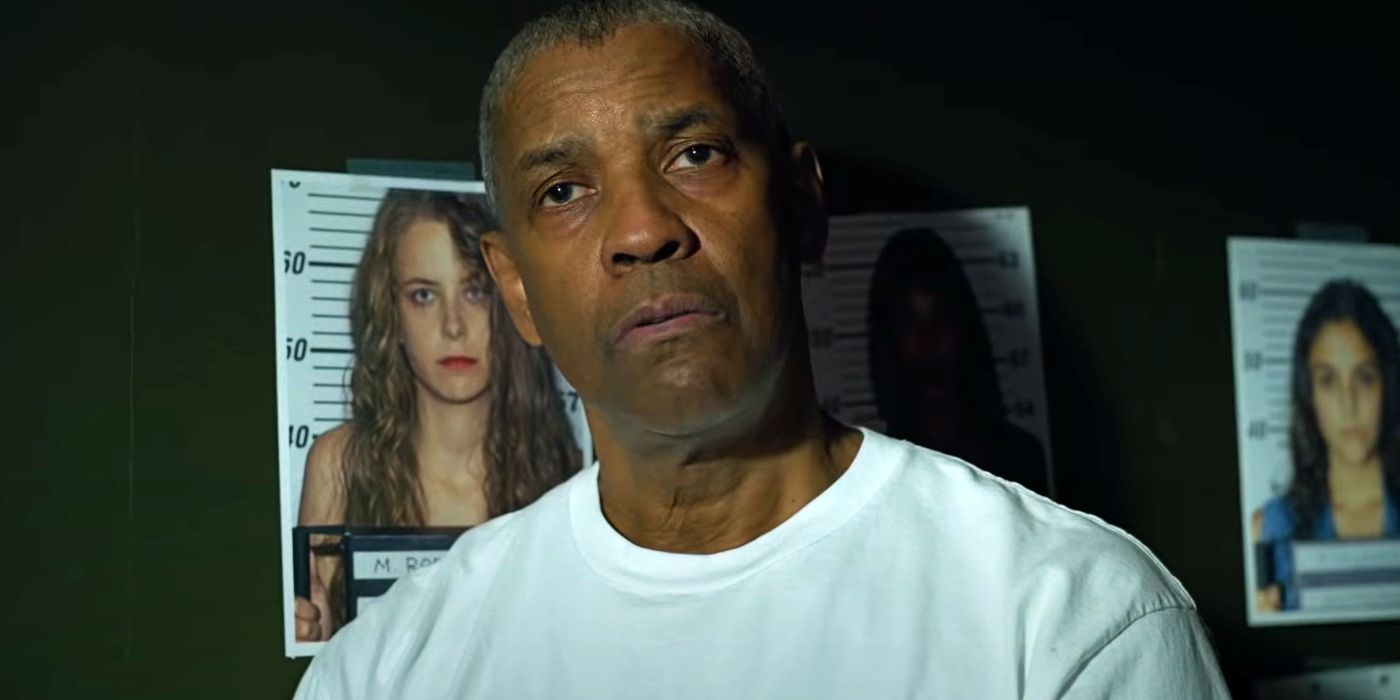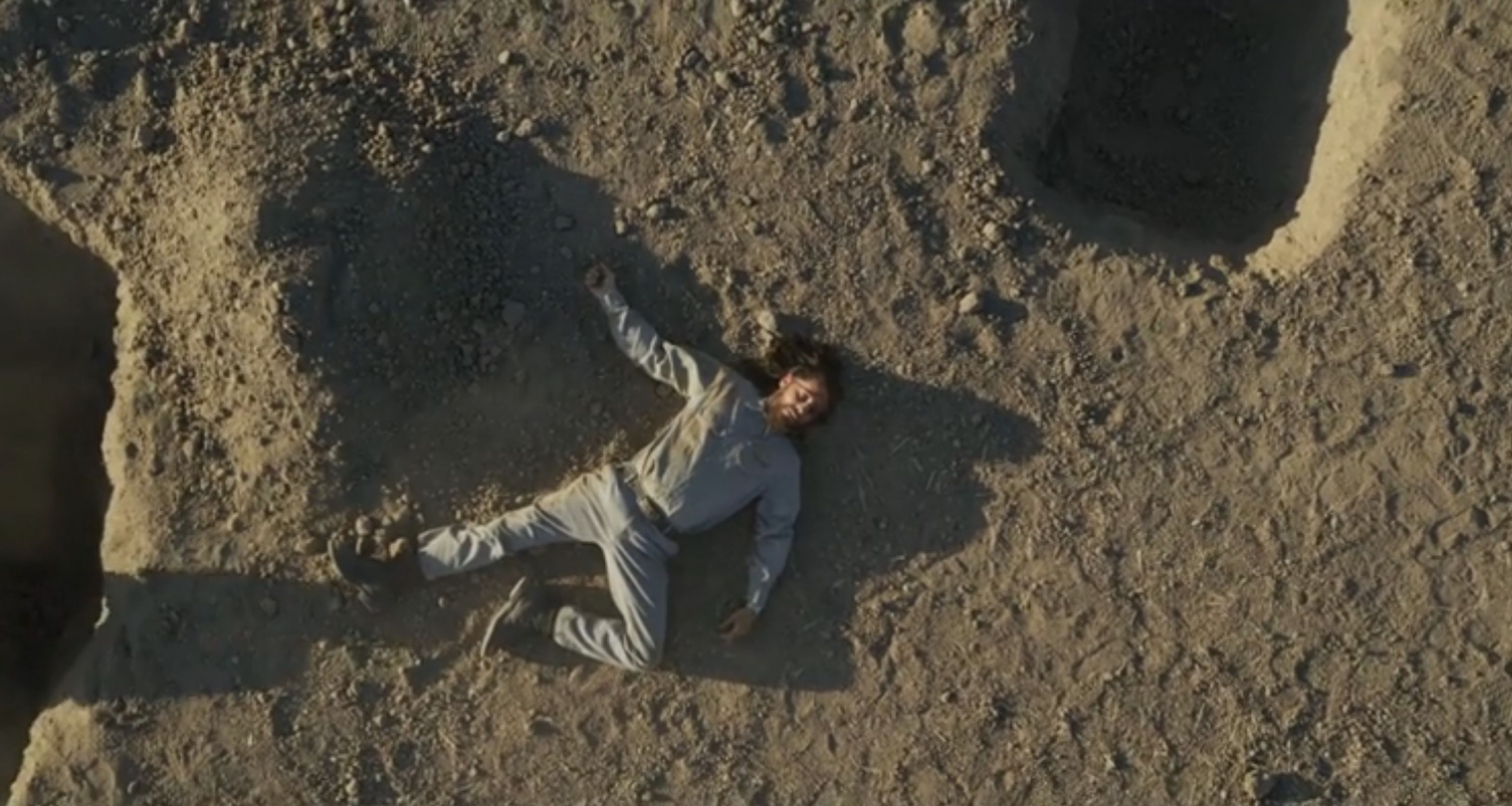
The primary focus of John Lee Hancock’s neo-noir crime thriller, The Little Things, is that of a killer terrorizing the streets of Los Angeles, and whether officers Joe Deacon (Denzel Washington) and Jim Baxter (Rami Malek) have correctly identified the killer, who they suspect to be Albert Sparma (Jared Leto). However, as the film progresses and the bodies begin to pile up, the investigation takes a murkier turn when the prime suspect defies legal thresholds of culpability, leaving Deacon and Baxter furious, perplexed, and on edge.
The reason both Baxter and Sparma seem to be utterly sure of Sparma’s involvement can be attributed to a string of circumstantial factors, which is further strengthened by Sparma’s increasingly questionable and bizarre behavior. However, the mounting suspense as to whether Sparma is the killer is resolved when he lures Baxter to an empty desert stretch, revealing that he had not killed a single human being in his entire life. Constantly toying with and goading the officers to provoke a response from them, Sparma appears like the type of man who derives psychological pleasure out of playing pretend and role-playing.
However, what does one make of the plentiful, yet unrelated circumstantial evidence that points at Sparma? While there isn’t much ambiguity in The Little Things in terms of its ending, it serves to highlight how personal guilt and obsession can hinder social justice, and the question of whether or not Sparma was the killer haunts the characters and audience alike. Here’s a breakdown of the clues that the killer left behind, and the ways they indicate he wasn't actually the one they sought.

While there were clues that led Deacon to Sparma, they were circumstantial at best, as one needs to take into consideration that every murder case has a list of possible suspects who match the killer’s profile to some degree. These clues commence in the narrative when Baxter and Deacon arrive at the murder scene of Julie Brock, a young woman who had been killed in line with the MO of multiple stab wounds, bite marks, and carefully-positioned corpse. After the forensics team finds a partial fingerprint in the scene, Deacon investigates further and comes to the conclusion that the killer knew the victim in some capacity, and chose to come back to the apartment after the murder and stock the fridge with food and Busch Light beer. While running a list of the possible repairmen who had visited Julie’s apartment prior to her death, Deacon is pointed at Sparma.
While analyzing the killer’s profile and motivations The Little Things' main characters, Deacon and Baxter, come to the conclusion that the killer in question is somebody who owns a vehicle with ample trunk space, preferring to travel across L.A. in order to carry out random killings. This seems to fit Sparma perfectly, as he owns a vehicle fitting this description, which also has a lot of miles on it. However, as this alone is not proof enough, Baxter runs Sparma’s prints against that of the crime scene print, but the results turn up inconclusive. This is further complicated by the fact that when Deacon matches Sparma’s bite patterns on a discarded pizza against that of the killer’s, the results are, yet again, inconclusive. Determined to pin Sparma, Deacon raids his apartment, which is clean except for the presence of Busch Light beer cans in the fridge/trash and a dozen newspaper clippings about the murders.
The presence of the beer cans are not indicative of Sparma’s culpability, as the brand is incredibly common for the time, and the clippings can be attributed to the fact that Sparma is a self-proclaimed crime buff. While it is clear that Sparma does suffer from some sort of psychosexual fixation, thriving on make-believe fantasies wherein he is considered the killer, The Little Things offers no concrete evidence that points to his involvement in the crimes themselves. Although it is uncanny that Sparma’s daily habits match that of the killer’s in an uncanny way, such as Sparma’s love of roast beef, which matches the food forced inside the body of a victim, there is no clear, tangible evidence that warrants his immediate arrest.

Halfway through the investigation, Detective Jamie Estrada (Natalie Morales) informs Baxter that Sparma had been embroiled in a false confession to murder in the past. This paints Sparma in a completely new light, as it is indicative of the fact that he is a true-crime fanatic to the point of implicating himself for attention. This obsession with serial killing on Sparma’s part is understandably baffling for both Deacon and Baxter, as it is indeed difficult to understand whether Sparma’s behavior is simply creepy, yet harmless, or a precursor to meditated killings of his own in the future. Moreover, Sparma’s suspicious behavior could be attributed to the fact that he holds an innate understanding of the true killer’s psychology, and simply apes certain aspects so as to attract the officers’ attention to him, only to baffle and evade them in a twisted game of cat-and-mouse.

When Sparma corners Baxter by taunting him about the whereabouts of Ronda Rathbun in The Little Things, the audience is temporarily under the impression that Sparma is going to kill Baxter after luring him away. However, these latent expectations are constantly subverted, as it becomes clear that Sparma is not interested in killing Baxter, but simply derives obscene pleasure in preying upon the latter’s desperation to catch the killer. If Sparma was indeed the killer, it would make sense for him to lure Baxter to a deserted area and then kill him once and for all. However, this is not the case as Sparma is not only unarmed but also does not attempt to take Baxter by surprise when he has his back turned to him. Hence, the reason why Sparma chooses to lure Baxter away is to simply indulge in a twisted game of make-believe, and taunt him to the point of no return.

A seminal clue that might have potentially tied Ronda Rathbun to Sparma is the red barrette she was wearing prior to her disappearance. However, after Baxter accidentally kills Sparma, Deacon scours his apartment for evidence but fails to find any. In order to alleviate Baxter’s surmounting guilt, Deacon buys a red barrette and sends it to Baxter, implying that Sparma was, in fact, the killer in question. As this is not the case, the red barrette acts as a red herring for Baxter, emerging as a symbol of guilt and the systematic evasion of criminal justice.

One of the most suspicious activities carried out by Sparma in The Little Things is when Deacon tails his vehicle and finds out that he has parked his car at the exact mile marker, namely 146, near the highway where the bodies of the victims were found. This particular detail was not known to the public but only revealed over police radio. When Deacon finds Sparma’s vehicle parked there, he immediately assumes he is the killer, and understandably so. However, it becomes clear later that Sparma knew about the exact mile marker owing to the fact that he had a police scanner, which allowed him to stay up-to-date regarding key crime scene details and case-related leads.

While The Little Things does not reveal the true identity of the killer, it does make it clear that Sparma was not Little Things' killer. However, whether he was completely innocent is a whole other matter altogether, as his psychological state showed signs of mania when he was presented with the post-mortem photographs of the dead women. It is entirely possible that Sparma could have gone on to commit an actual crime sometime in the future, having surveyed the patterns of an actual killer and the failings of the justice system. However, as there is no concrete evidence regarding Sparma’s culpability, he remains innocent in the eyes of the law, making his murder a gross cover-up in a high-stakes murder investigation.
from ScreenRant - Feed https://ift.tt/2YRrjkY

0 Comments